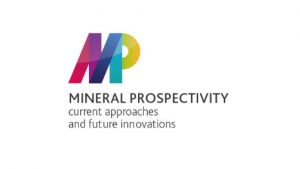ISTO, UMR 7327,
Univ Orléans, CNRS, BRGM, OSUC, F-45071 Orléans, France

- Cet évènement est passé
Mineral prospectivity – Current approaches and future innovations –
24 octobre 2017 / 26 octobre 2017
Navigation Évènement

Mineral prospectivity/favorability analysis and predictive geosciences for resource estimation are based on multi-criteria combination thanks to geological spatial and/or quantitative data. Indeed, extracting useful information from existing and sometimes massive amounts of data sets is of great scientific importance and has crucial added value in its applications. In the same time, numerical simulation based on physicochemical and thermodynamic laws has been developed in 3D and 4D in order to identify potentially-mineralized area. Such approaches are now widely used for geothermal energy exploration but are clearly under-exploited in mining exploration. Connections between the geoscientist communities dealing with deterministic modelling, GIS-based techniques for favorability and numerical simulation should give new fruitful perspectives for the coming years.
Predictive mapping necessitates the development of refined/improved mineral/ore deposit models and accompanies knowledge evolution in metallogeny. This approach is often included in various numerical tools, because it allows reducing time, cost and impact (in mineral exploration for example), or guiding decisions (e.g., definition of the protection perimeter of deposits of public importance), or defining a mineral policy (e.g., evaluation of the mineral potential of a region).
To make smart, efficient and more accurate mineral exploration, it is important to go beyond traditional concepts and extend them by addressing some key issues.
- Assessing the degree of efficiency of GIS-based techniques used for the geocomputation of mineral exploration targets.
- Biases on the models outcome linked to unclear interoperability of data, harvesting of numerous data through distributed architectures and merging of various not so well known datasets (in terms of quality, reliability, completeness…). Furthermore, 3D/4D predictive modelling appears as a really emerging and promising technique which will certainly take off when approaches related to the feeding of a predictive algorithm from heterogeneous 3D models will be mastered.
- New approaches in data mining and their abilities/potentialities to extract new knowledge from the existing databases, to predict for example which known deposits may contain untested commodities or find new deposits… Specifically, big datasets obtained by cheap and numerous information-sensing mobile devices, aerial (remote sensing), wireless sensor networks and LIDAR surveys… which refined treatment through ‘big data’ predictive analysis may enlarge possibilities of exploitation.
- Main issues to be addressed by deterministic modelling to provide a significant contribution to be coupled to favorability mapping. Our knowledge on thermodynamic, physicochemical and reactive transport processes driving to mineral/ore concentrations in the continental crust highly beneficiated from both numerical modelling and experimental approaches developed during the last decades. Results from such studies can be used to better identifying relevant criteria and their weight for predictivity/favorability scoring computations.
The main target of this conference is to bring together specialists from different fields of “Predictive Geosciences” to discuss the raised issues. Obviously, the acquisition and the consistency of field data, kriging and scaling of data as well as laboratory experimentations and upscaling methodologies will be debated. This conference will be organized for 2 days of intensive and hopefully very fruitful scientific exchanges with oral and posters sessions.
Détails
- Début :
- 24 octobre 2017
- Fin :
- 26 octobre 2017
- Catégories d’Évènement:
- GP Métallogénie, Journées et colloques
- Étiquettes Évènement :
- GP_Metallogenie
- Site Web :
- http://www.brgm.eu/news-media/mineral-prospectivity-conference
Lieu
- BRGM, Auditorium
-
3 avenue Claude-Guillemin
Orléans, France + Google Map


